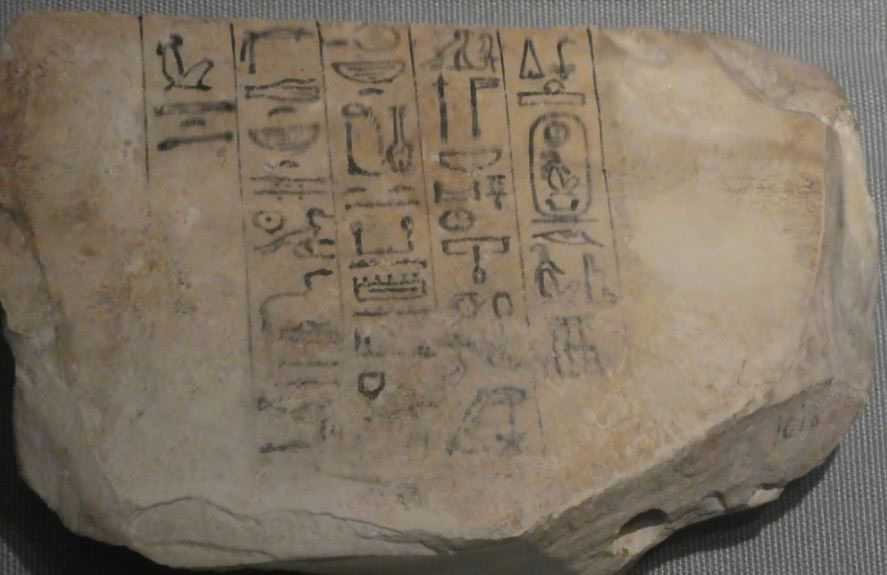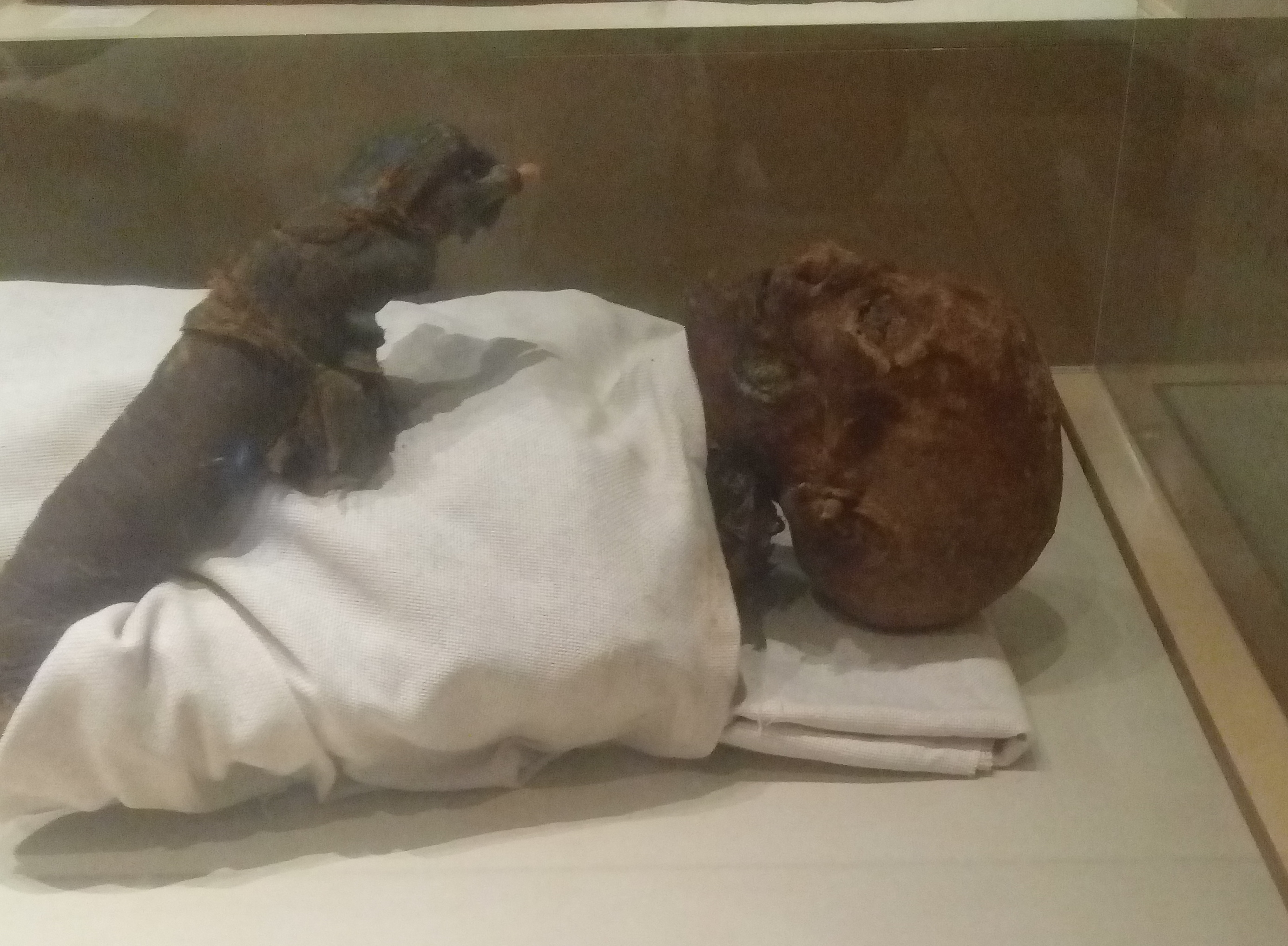|
Sitre In
The ancient Egyptian noble Sitre In (or Sitra In, or Sit-re known as In or Inet, or simply Sitre) was buried in the Valley of the Kings, in tomb KV60. She has been identified as the nurse of Hatshepsut. A life-sized statue of her holding Hatshepsut is inscribed with her charge, which is repeated on an '' ostrakon'' now in Vienna.Eric H. Cline, David B. O'Connor, Thutmose III: A New Biography', University of Michigan Press 2006, p.98 Although not a member of the royal family, she received the honour of a burial in the royal necropolis. Her coffin has the inscription ''wr šdt nfrw nswt In'', identifying her as the ''Great Royal Wet Nurse A wet nurse is a woman who breastfeeds and cares for another's child. Wet nurses are employed if the mother dies, or if she is unable or chooses not to nurse the child herself. Wet-nursed children may be known as "milk-siblings", and in some cu ... In''. References 16th-century BC women People of the Eighteenth Dynasty of Egypt Wet ... [...More Info...] [...Related Items...] OR: [Wikipedia] [Google] [Baidu] |
Valley Of The Kings
The Valley of the Kings ( ar, وادي الملوك ; Late Coptic: ), also known as the Valley of the Gates of the Kings ( ar, وادي أبوا الملوك ), is a valley in Egypt where, for a period of nearly 500 years from the 16th to 11th century BC, rock-cut tombs were excavated for the pharaohs and powerful nobles of the New Kingdom (the Eighteenth to the Twentieth Dynasties of Ancient Egypt). The valley stands on the west bank of the Nile opposite Thebes (modern Luxor), within the heart of the Theban Necropolis.Siliotti (1997), p.13 The wadi consists of two valleys: the East Valley (where the majority of the royal tombs are situated) and the West Valley (Valley of the Monkeys). With the 2005 discovery of a new chamber and the 2008 discovery of two further tomb entrances, the valley is known to contain 63 tombs and chambers (ranging in size from KV54, a simple pit, to KV5, a complex tomb with over 120 chambers). It was the principal burial place of the major royal ... [...More Info...] [...Related Items...] OR: [Wikipedia] [Google] [Baidu] |
KV60
Tomb KV60 is an ancient Egyptian tomb in the Valley of the Kings, Egypt. It was discovered by Howard Carter in 1903, and re-excavated by Donald P. Ryan in 1989. It is one of the more perplexing tombs of the Theban Necropolis, due to the uncertainty over the identity of one female mummy found there (KV60A). She is identified by some, such as Egyptologist Elizabeth Thomas, to be that of the Eighteenth Dynasty pharaoh Hatshepsut; this identification is advocated for by Zahi Hawass. Layout This small, uninscribed tomb is located approximately front of the entrance of the tomb of Mentuherkhepshef (KV19). It consists of a rough, steep, flight of stairs leading to a doorway blocked with large stones. A pair of niches are cut into the wall just inside the entrance. A straight passage that is about long descends to a low, roughly cut chamber which measures about high. A small side chamber branches off about halfway down the descending corridor. Discovery and investigations This tomb ... [...More Info...] [...Related Items...] OR: [Wikipedia] [Google] [Baidu] |
Hatshepsut
Hatshepsut (; also Hatchepsut; Egyptian: '' ḥꜣt- špswt'' "Foremost of Noble Ladies"; or Hatasu c. 1507–1458 BC) was the fifth pharaoh of the Eighteenth Dynasty of Egypt. She was the second historically confirmed female pharaoh, after Sobekneferu. (Various other women may have also ruled as pharaohs or at least regents before Hatshepsut, as early as Neithhotep around 1,600 years prior.) Hatshepsut came to the throne of Egypt in 1478 BC. As the principal wife of Thutmose II, Hatshepsut initially ruled as regent to Thutmose III, a son of Thutmose II by another wife and the first male heir. While Thutmose III had inherited the throne at about two years old, Hatshepsut continued to rule by asserting her lineage as the daughter and only child of Thutmose I and his primary wife, Ahmose. Her husband Thutmose II was the son of Thutmose I and a secondary wife named Mutnofret, who carried the title 'King's daughter' and was probably a child of Ahmose I. Hatshepsut and T ... [...More Info...] [...Related Items...] OR: [Wikipedia] [Google] [Baidu] |
Ostrakon
An ostracon ( Greek: ''ostrakon'', plural ''ostraka'') is a piece of pottery, usually broken off from a vase or other earthenware vessel. In an archaeological or epigraphical context, ''ostraca'' refer to sherds or even small pieces of stone that have writing scratched into them. Usually these are considered to have been broken off before the writing was added; ancient people used the cheap, plentiful and durable broken pieces of pottery around them as convenient places to place writing for a wide variety of purposes, mostly very short inscriptions, but in some cases very long. Ostracism In Classical Athens, when the decision at hand was to banish or exile a certain member of society, citizen peers would cast their vote by writing the name of the person on the shard of pottery; the vote was counted and, if unfavorable, the person was exiled for a period of ten years from the city, thus giving rise to the term '' ostracism''. Broken pottery shards were also used for an ... [...More Info...] [...Related Items...] OR: [Wikipedia] [Google] [Baidu] |
Vienna
en, Viennese , iso_code = AT-9 , registration_plate = W , postal_code_type = Postal code , postal_code = , timezone = CET , utc_offset = +1 , timezone_DST = CEST , utc_offset_DST = +2 , blank_name = Vehicle registration , blank_info = W , blank1_name = GDP , blank1_info = € 96.5 billion (2020) , blank2_name = GDP per capita , blank2_info = € 50,400 (2020) , blank_name_sec1 = HDI (2019) , blank_info_sec1 = 0.947 · 1st of 9 , blank3_name = Seats in the Federal Council , blank3_info = , blank_name_sec2 = GeoTLD , blank_info_sec2 = .wien , website = , footnotes = , image_blank_emblem = Wien logo.svg , blank_emblem_size = Vienna ( ; german: Wien ; ba ... [...More Info...] [...Related Items...] OR: [Wikipedia] [Google] [Baidu] |
Necropolis
A necropolis (plural necropolises, necropoles, necropoleis, necropoli) is a large, designed cemetery with elaborate tomb monuments. The name stems from the Ancient Greek ''nekropolis'', literally meaning "city of the dead". The term usually implies a separate burial site at a distance from a city, as opposed to tombs within cities, which were common in various places and periods of history. They are different from grave fields, which did not have structures or markers above the ground. While the word is most commonly used for ancient sites, the name was revived in the early 19th century and applied to planned city cemeteries, such as the Glasgow Necropolis. Necropoli in the ancient world Egypt Ancient Egypt is noted for multiple necropoleis. Ancient Egyptian funerary practices and beliefs about the afterlife led to the construction of several extensive necropoleis to secure and provision the dead in the hereafter. These necropoleis are therefore major archaeological ... [...More Info...] [...Related Items...] OR: [Wikipedia] [Google] [Baidu] |
Wet Nurse
A wet nurse is a woman who breastfeeds and cares for another's child. Wet nurses are employed if the mother dies, or if she is unable or chooses not to nurse the child herself. Wet-nursed children may be known as "milk-siblings", and in some cultures, the families are linked by a special relationship of milk kinship. Wet-nursing existed in cultures around the world until the invention of reliable formula milk in the 20th century. The practice has made a small comeback in the 21st century. Reasons A wet nurse can help when a mother is unable or unwilling to breastfeed her baby. Before the development of infant formula in the 20th century, wet-nursing could save a baby's life. There are many reasons why a mother is unable to produce sufficient breast milk, or in some cases to lactate at all. For example, she may have a chronic or acute illness, and either the illness itself, or the treatment for it, reduces or stops her milk. This absence of lactation may be temporary or permane ... [...More Info...] [...Related Items...] OR: [Wikipedia] [Google] [Baidu] |
16th-century BC Women
The 16th century begins with the Julian year 1501 ( MDI) and ends with either the Julian or the Gregorian year 1600 ( MDC) (depending on the reckoning used; the Gregorian calendar introduced a lapse of 10 days in October 1582). The 16th century is regarded by historians as the century which saw the rise of Western civilization and the Islamic gunpowder empires. The Renaissance in Italy and Europe saw the emergence of important artists, authors and scientists, and led to the foundation of important subjects which include accounting and political science. Copernicus proposed the heliocentric universe, which was met with strong resistance, and Tycho Brahe refuted the theory of celestial spheres through observational measurement of the 1572 appearance of a Milky Way supernova. These events directly challenged the long-held notion of an immutable universe supported by Ptolemy and Aristotle, and led to major revolutions in astronomy and science. Galileo Galilei became a champion ... [...More Info...] [...Related Items...] OR: [Wikipedia] [Google] [Baidu] |
People Of The Eighteenth Dynasty Of Egypt
A person ( : people) is a being that has certain capacities or attributes such as reason, morality, consciousness or self-consciousness, and being a part of a culturally established form of social relations such as kinship, ownership of property, or legal responsibility. The defining features of personhood and, consequently, what makes a person count as a person, differ widely among cultures and contexts. In addition to the question of personhood, of what makes a being count as a person to begin with, there are further questions about personal identity and self: both about what makes any particular person that particular person instead of another, and about what makes a person at one time the same person as they were or will be at another time despite any intervening changes. The plural form "people" is often used to refer to an entire nation or ethnic group (as in "a people"), and this was the original meaning of the word; it subsequently acquired its use as a plural form of pe ... [...More Info...] [...Related Items...] OR: [Wikipedia] [Google] [Baidu] |






_1938.jpg)